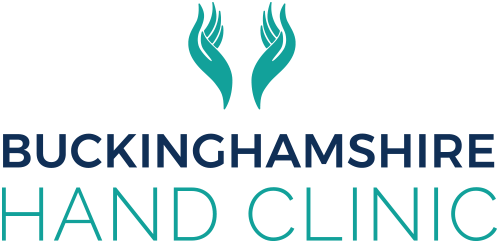The elbow is one of the most complex joints in our body. It helps to position the hand for activity. Conditions around the elbow may cause symptoms in the wrist and hand (eg. pins and needles or numbness). The function of the hand and wrist (eg. grip) may also be affected. Elbow disorders are often related to over-use or sporting activities.
Cubital Tunnel Syndrome
Cubital Tunnel Syndrome is the second most common nerve entrapment syndrome in the upper limb. It is caused by abnormality in conduction along the ulnar nerve at the inner (medial) aspect of the elbow joint.
Symptoms: Characteristic symptoms are tingling and numbness affecting the little and ring fingers. Weakness and muscle wasting are suggestive of severe end-stage disease. Symptoms are often brought on by keeping the elbow bent for a prolonged duration and by leaning on the elbow. Sleeping in the ‘foetal position’ with elbows bent aggravates the symptoms and may wake the patient up. The symptoms are initially intermittent and may become constant as the condition progresses.
Investigations: Nerve conduction studies are undertaken to confirm the diagnosis and assess severity. Radiographs (X-Rays) of the elbow may sometimes be needed, particularly if there is a history of arthritis or previous fracture.
Treatment: Treatment is non-operative in the early stages and is focused on activity modification (avoiding prolonged bending of the elbow and leaning on it). Night splints are beneficial. Steroid injection is not routinely recommended but is sometimes needed to confirm diagnosis. In my practice, I request the radiologists to perform the injection under ultrasound scan guidance to minimise the risk of nerve damage. Surgery is indicated when symptoms fail to resolve or if muscle wasting or weakness is present.
Ulnar nerve release at the elbow (cubital tunnel) and nerve transposition
The operation is performed as a day case usually under general or regional anaesthesia. The ulnar nerve is released by dividing a the soft tissue overlying it at the inner (medial) aspect of the elbow through 4-5 cm skin incision. After the release, nerve stability is tested by moving the elbow joint through its range of movement. If the nerve is unstable (flicks across the medial epicondyle commonly known as the ‘funny’ bone), it is ‘transposed’ to the front of the elbow. Absorbable sutures are preferred although non‐absorbable sutures are sometimes used for skin closure. The wrist is dressed with a bulky dressing to protect the wound.
After-care and recovery: Sutures are trimmed or removed after 12‐14 days. The wound should be kept dry and clean to reduce the risk of infection. The elbow should be rested until the healed but gentle active movements are permitted. Finger movements and use of the hand for light activities are commenced straightaway. Simple painkillers like paracetamol and ibuprofen for 3-4 days is all that is needed to avoid pain. It is important to take the painkillers soon after the operation and before the local anaesthetic has worn off for best results.
You will be seen in the clinic around 2 weeks after surgery. Once the wound has healed, scar massage and exercises will aid recovery. These can be performed at home or under the guidance of a hand therapist. You can expect to return to a desk job by 7-10 days. Most people are able to resume driving after 2 weeks.
You might notice reduced sensation over the tip of the elbow if tiny nerve branches supplying sensation to the skin do not recover fully. It usually does not cause any functional impairment but you should avoid resting the tip of the elbow on hot or sharp surfaces to avoid skin damage. Pins and needles usually subside fairly quickly. Numbness often takes 12-18 months to settle down and may not recover completely in severe cases. Muscle wasting is usually permanent and does not recover. In long-standing or severe cases, symptoms may not be relieved completely.
